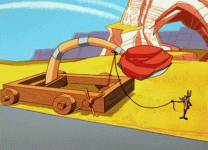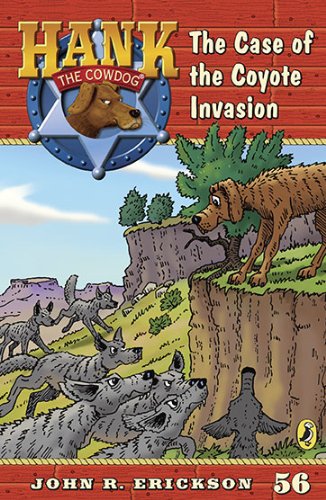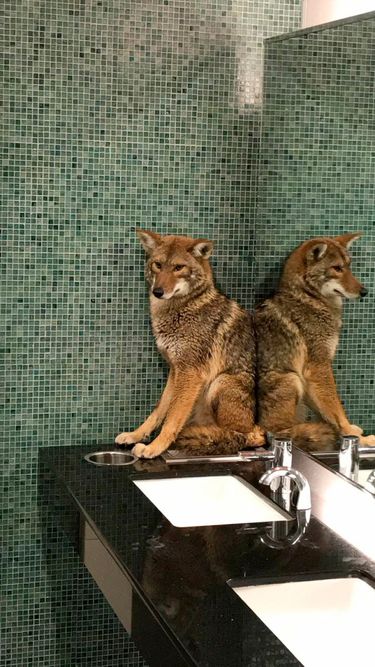Why Killing Coyotes Doesn’t Work
The coyote, our unique Song Dog who has existed in North America since the Pleistocene Epoch, is the most persecuted native carnivore in North America and the most frequent victim of wildlife killing contests. Killed for prizes, poisoned, trapped, and aerial gunned, an estimated half a million coyotes—one per minute—are slaughtered every year in the United States. The best available, peer-reviewed science shows that indiscriminately killing coyotes is counterproductive and a threat to healthy ecosystems. There is no credible evidence that indiscriminate killing of coyotes effectively serves any beneficial wildlife management purpose. Over 70 prominent conservation scientists condemn coyote killing contests— their signed statement is available here. Coyotes play a crucial ecological role and provide a range of free, natural ecological services in urban and rural settings. Coyotes directly or indirectly help to control disease transmission, keep rodent populations in check, consume animal carcasses, increase biodiversity, remove sick animals from the gene pool, and protect crops. Unexploited coyote populations can contribute to ecosystem health through trophic cascade effects such as indirectly protecting ground-nesting birds from smaller carnivores and increasing the biological diversity of plant and wildlife communities.1 State wildlife management agencies across the country recognize the benefits that coyotes provide to ecosystems. Indiscriminately killing coyotes does not reduce their populations—in fact, it can have the opposite effect. It is nearly impossible to permanently reduce coyote populations.2 More than 100 years of coyote killing has failed to do that. Since 1850—when mass killings of coyotes began— coyotes’ range has tripled in the United States.3 Indiscriminate killing of coyotes stimulates increases in their populations by disrupting their social structure, which encourages more breeding and migration.4 Unexploited coyote populations are selfregulating based on the availability of food and habitat and territorial defense by resident family groups. Typically, only the dominant pair in a pack of coyotes reproduces, and they behaviorally suppress reproduction among subordinate members of the group. When one or both members of the dominant pair are killed, socially bonded packs break up, and subordinate members disperse, find mates and reproduce. More coyotes breed at younger ages, and more pups survive following a temporary increase in available prey. These factors work synergistically to increase coyote populations following exploitation events
It’s impossible to completely eradicate coyotes from an area.6 New coyotes will quickly replace coyotes who have been removed. Coyote pairs hold territories, which leaves single coyotes (“floaters”) continually looking for new habitat to occupy.7 There is no credible evidence that indiscriminate killing of coyotes succeeds in increasing the abundance of game species such as deer or pheasants. Rather than focusing on any one species, coyotes are opportunists who eat a diverse diet including small mammals, birds, amphibians, reptiles, fish, insects, fruit, and vegetables. Rabbits and rodents are generally their top choice.8 In response to hunters’ concerns that predators diminish populations of small game animals, the Pennsylvania Game Commission (PGC) emphatically stated in 2016 that “[predators] don’t compete with our hunters for game” and “to pretend that predator control can return small game hunting to the state is a false prophecy.”9 The PGC emphasized that habitat protection is the most important factor in determining small game abundance.10 The North Carolina Wildlife Resources Commission (NCWRC) similarly found that “most coyote diet studies document low to no prevalence of wild turkey or other game birds in diets,” and that coyotes can benefit duck, quail, and waterfowl populations by controlling the presence of smaller predators like raccoons and foxes that prey on game birds and their nests.11 Killing coyotes also does not protect larger game animals such as deer. Deer populations are reliant upon a host of other factors including habitat, shelter, nutrition, and reproductive opportunity.12 Comprehensive studies, including those conducted in Colorado13 and Idaho,14 show that killing native carnivores fails to grow deer herds. The NCWRC has stated, “while predation on adult deer has been documented, it is uncommon, and hunter harvest remains as the primary source of adult mortality in hunted populations” and “the most effective method to increase or stabilize deer numbers at statewide and regional scales is through regulatory changes in season lengths, bag limits, and timing of harvest.”15 Claims that coyotes attack humans and pets and threaten livestock are greatly exaggerated. A recent study of coyote attacks on humans over a 38-year period (1977-2015) found only 367 documented attacks by non-rabid coyotes in Canada and the U.S., two of which resulted in death.16 In comparison, there are more than 4.5 million dog bites annually in the U.S., approximately 800,000 of which require medical attention.17 While there is little data regarding how many pets are killed by coyotes annually, simple measures can be taken to greatly increase pet safety.18 Most coyotes do not prey on livestock. According to U.S. Department of Agriculture (“USDA”) data, livestock losses to carnivores are minuscule. In 2015, less than 0.39 percent of the U.S. cattle and sheep inventories (including calves and lambs) were lost to all carnivores combined—including coyotes, wolves, cougars, bears, vultures, dogs, and unknown carnivores.19 The predominant sources of mortality to livestock, by far, are non-predator causes including disease, illness, birthing problems, and weather.20 Wildlife killing contests and other indiscriminate, lethal control methods will not prevent conflicts with humans, pets or livestock—and may increase them. Disrupting the coyote family structure may increase coyote attacks. Exploited coyote populations tend to have younger, less experienced coyotes that haven’t been taught appropriate hunting behaviors. These coyotes are more likely to prey on easy targets like livestock or pets. Additionally, exploited coyote packs are more likely to have increased numbers of yearlings reproducing and higher pup survival. Feeding pups is a significant motivation for coyotes to switch from killing small and medium-sized prey to killing sheep.21 Open hunts and killing contests do not target specific, problem-causing coyotes. Most killing contests target coyotes in woodlands and grasslands where conflicts with humans, livestock, and pets are minimal—not coyotes who have become habituated by human-provided attractants such as unsecured garbage, pet food, or livestock carcasses. Prevention—not lethal control—is the best method for minimizing conflicts with coyotes in urban and rural settings. Eliminating access to easy food sources, such as bird seed and garbage, supervising pets while outside, and keeping cats indoors reduces conflicts with pets and humans.22 Practicing good animal husbandry and using strategic, nonlethal predator control methods to protect livestock (such as electric fences, guard animals, and removing dead livestock) are more effective than lethal control at preventing conflicts.23 For more information, see Project Coyote’s Coyote Friendly Communities™ program and Ranching with Wildlife program on our website ProjectCoyote.org







